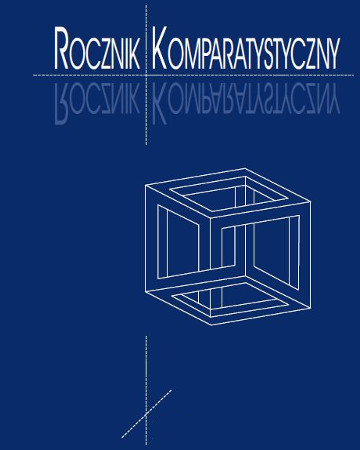





| Autorzy: |
Bożena
Zaboklicka
Universitat de Barcelona |
| Słowa kluczowe: | Henryk Sienkiewicz literatura i kultura Katalonii przekładoznawstwo komparatystyka Quo vadis? |
| Data publikacji całości: | 2015 |
| Liczba stron: | 15 (333-347) |
| 1. | Balcells, Albert. Història de Catalunya. Barcelona: L’Esfera dels Llibres / Edicions 62, 2006. |
| 2. | Carreres, Joan. Ideari i poètica de Josep Maria Capdevila. Vol. 3. Barcelona: UAB, 2001. 100–101. Online. http://www.tdx.cat/bitstream/handle/10803/4827/jcp6de6. pdf;jsessionid=4E8A4751834E98A3BEC3AE4B44AAC2B9.tdx2?sequence=6 [dostęp: 14 I 2014]. |
| 3. | Coll-Vinent, Sílvia. „Joan Estelrich i Montaner i Simón (1925–1949)”. La traducció i el món editorial de la postguerra. Eds. S. Coll-Vinent, C. Eisner, E. Gallén. Lleida: Punctum & Trilcat, 2011. 215–227. |
| 4. | Llanas, Manuel. Història de l’edició a Catalunya. Vol. L’edició a Catalunya. Segle XX (fins a 1939). Barcelona: Gremi d’Editors de Catalunya, 2005. |
| 5. | ---, Ramon Pinyol. „Les traduccions d’escriptors polonesos a Catalunya fins a 1939”. Retos del hispanismo en la Europa Central y del Este. Eds. L.F. Cercós García y otros. Madrid: Palafox Pezuela, 2007a. 849–863. |
| 6. | ---, ---. „Przekłady z języka polskiego w Katalonii do 1939 roku. Przegląd”. Studia Iberystyczne 6 (2007b): 183–195. |
| 7. | ---, ---. „Rudolf Jan Slabý (1885–1957), mediador entre les cultures eslaves i les hispàniques”. Discurso sobre fronteras – fronteras del discurso: estudios del ámbito ibérico e iberoamericano. Red. A. Gregori i in. Łask: Oficyna Wydawnicza Leksem, 2009. 35–47. |
| 8. | Malé, Jordi. Carles Riba i la traducció. Lleida: Punctum & Trilcat, 2006. |
| 9. | Marco, Joseph. „La llengua de les traduccions (aspectes generals) i la llengua de les traduccions al català en la literatura d’entreguerres”. Llengua literària i traducció (1890–1939). Eds. M. Ortín, D. Pujol. Lleida: Punctum Trilcat, 2009. |
| 10. | Ortín, Marcel. „Las traducciones, del Noucentisme a la actualidad”. Historia de la traducción en España. Eds. F. Lafarga, L. Pegenaute. Salamanca: Editorial Ambos Mundos, 2004. |
| 11. | Pericay, Xavier, Toutain, Ferran. El malentès del noucentisme. Tradició i plagi a la prosa catalana moderna. Barcelona: Proa, 1997. |
| 12. | Riba, Carles. Cartes de Carles Riba. Ed. C.J. Guardiola. Barcelona: Institut d’Estudis Catalans 2012. Online. http://www.iec.cat/carles-riba/carta.asp?num_carta=996 [dostęp: 3 V 2015]. |
| 13. | Sawicka, Anna. Drogi i rozdroża kultury katalońskiej. Kraków: Księgarnia Akademicka, 2006. |
| 14. | Sienkiewicz, Henryk. „Quo vadis?” [fragmenty]. [b. tłum.]. La Veu del Montserrat (Vic) 23 (1900). |
| 15. | ---. „L’organista de Ponikla”. [b. tłum.]. La Veu del Montserrat (Vic) 23 (25 VIII 1900). |
| 16. | ---. „En Janot music”. [b. tłum.]. La Veu del Montserrat (Vic) 23 (6 X 1900). |
| 17. | ---. A sangre y fuego. 2 vol. Trad. por A. Riera, J. J. Cadenas. Barcelona: Casa Editorial Mauci, 1900. |
| 18. | ---. Quo vadis?, Trad. por B. Amengual. Barcelona: Juan Gili, 1902a. |
| 19. | ---. Bartek el victorioso. Trad. por M.C.G. Barcelona: Tipografía Católica, 1902b. |
| 20. | ---. Seguim-lo. Trad. por R.S.T. D’Ací i d’Allà. 6.11 (XI 1920): 1075–1081; 6.12 (XII 1920). |
| 21. | ---. A sangre y fuego. Trad. por P. Pedraza y Páez. Barcelona: Ramón Sopena, 1922a. |
| 22. | ---. Endebades. Trad. por J.M. Girona. Barcelona: Editorial Catalana, 1922b. |
| 23. | ---. Bàrtek el vencedor i altres contes. Trad. por C. Riba. Barcelona: Editorial Catalana, 1922c. |
| 24. | Skibińska, Elżbieta. „Zniekształcone odbicie. Proza polska lat 1945–1989 we francuskim przekładzie”. Teksty Drugie 5 (2003). |
| 25. | Venuti, Lawrence. „Przekład, wspólnota, utopia”. Współczesne teorie przekładu. Antologia. Red. P. Bukowski, M. Heydel. Kraków: Wydawnictwo Znak, 2009. |
| 26. | Zaboklicka, Bożena. „Traduccions indirectes de Sienkiewicz a Catalunya”. Traducció indirecta en la literatura catalana. Eds. I. Garcia Sala, B. Zaboklicka, D. Sanz Roig. Lleida: Punctum, 2014. |